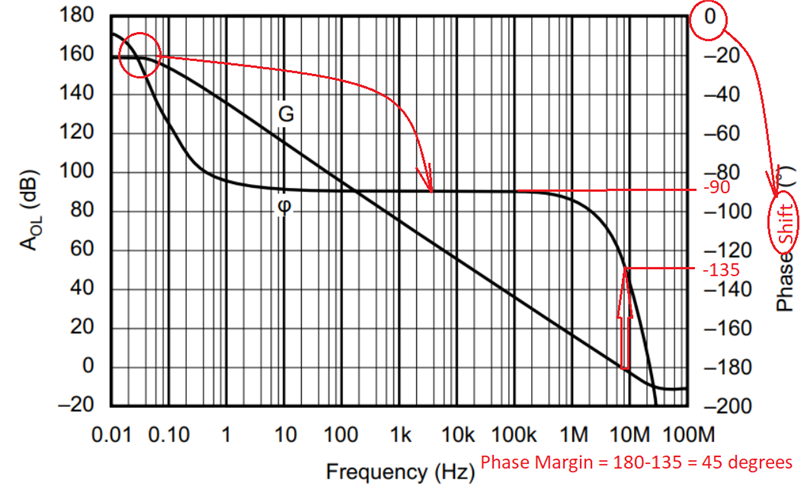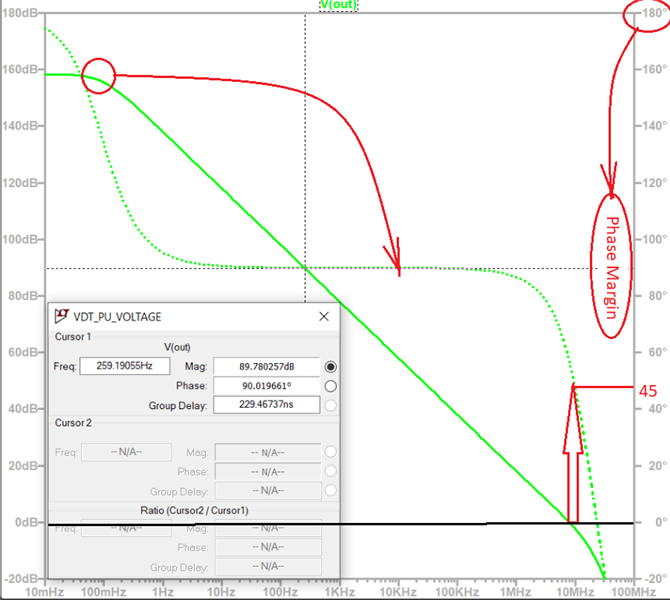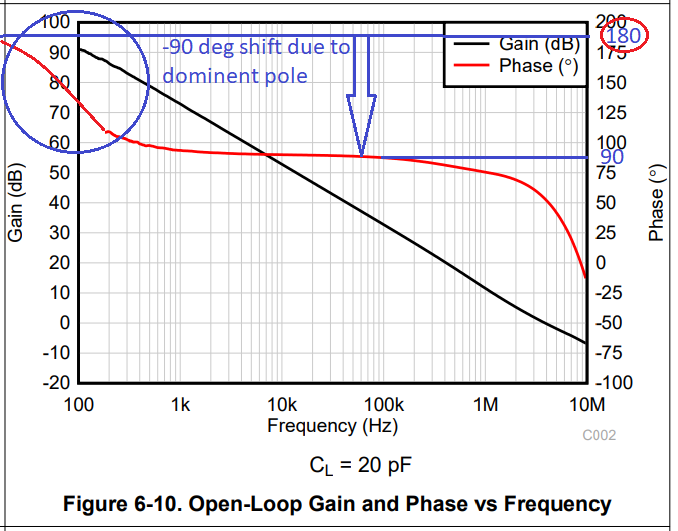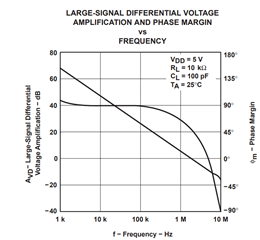Other Parts Discussed in Thread: OPA2227, OPA2991, TLC2272A
Hi,
I'm contacting you regarding the measurement of open loop gain and phase using LTSPICE of OPA2227 and OPA2991. The result i have in the simulation don't totally match the datasheet results
I'm using LTspice to measure this parameter using the "big inductor/big capacitor" method given by TI the following presentation : opamps stability phase margin presentation
Here are the simulated circuit :
Simulated circuits
And here are the results of the open loop gain simulation vs the datasheet graph for the two op amp:
OPA2991 Open loop gain vs phase simulation and datasheet
OPA2227 Open loop gain vs phase simulation and datasheet
As you can see above, the two simulations results are close to the datasheet results but, in the OPA2227 case, there is a 180° shift in the phase but i think that there should be a minus sign in front of the open loop gain (represented by v(out)) to get the phase as it is given in the datasheet. This is proven by the following open loop system schematic:

This minus sign would give the right phase for the OPA2227 but if i add this minus sign in the case of the OPA2991, it would give the wrong phase. It means that the Y axis represents the phase shift in the OPA2227 and seems to represent the phase margin in the OPA2991 datasheet...
So, i'd like to understand why there are these difference in the phase compared to the datasheet.
Thank you in advance for your response
Alassane






